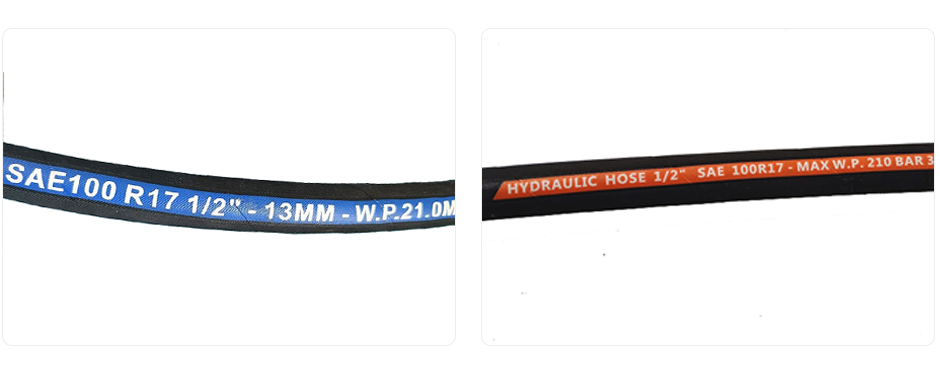335345435
Nov . 15, 2024 03:03 Back to list
hydraulic suction hose fittings
Understanding Hydraulic Suction Hose Fittings
Hydraulic systems are an integral part of modern machinery and equipment, providing the power needed for a variety of applications, from construction equipment to agricultural machinery. At the heart of these systems are hydraulic hoses, which transport hydraulic fluid under high pressure. One of the most critical components of these systems is the hydraulic suction hose fittings. In this article, we will explore the purpose, types, and applications of hydraulic suction hose fittings.
What are Hydraulic Suction Hose Fittings?
Hydraulic suction hose fittings are specially designed components used to connect hydraulic hoses to pumps or tanks in hydraulic systems. Their main purpose is to facilitate the smooth and efficient flow of hydraulic fluid from a reservoir to the pump, which then pressurizes the fluid for various applications. Proper functioning of these fittings is crucial, as they ensure that the hydraulic fluid is efficiently drawn into the system without leaks or air ingress that could compromise performance.
Importance of Hydraulic Suction Hose Fittings
The fittings play a pivotal role in maintaining the integrity of hydraulic systems. They are engineered to withstand negative pressures, which occur during the suction stage of fluid movement. If the suction hose fitting fails, it can lead to air leaks that cause cavitation, ultimately damaging the pump and other components. In essence, hydraulic suction hose fittings are the unsung heroes that help maintain system stability and efficiency.
Types of Hydraulic Suction Hose Fittings
1. Threaded Fittings These fittings utilize threads to create a secure connection between the hose and the hydraulic system. They are easy to install and remove, making them a popular choice in various applications. Threaded fittings come in different sizes and materials, ensuring compatibility with different hydraulic systems.
2. Flanged Fittings Flanged fittings feature a flat surface with holes for bolts, allowing for a strong and secure connection. They are often used in larger hydraulic systems where higher pressures and flow rates are present. Flanged fittings provide excellent sealing properties and are less prone to leaks compared to threaded fittings.
3. Quick-Connect Fittings These fittings allow for rapid connection and disconnection of hoses, which is beneficial in applications where hoses need to be frequently changed. Quick-connect fittings come in various designs and are ideal for mobile equipment and machinery that require quick setups.
4. Barbed Fittings Barbed fittings feature a series of raised ridges that grip the hose, creating a secure connection. They are common in lower-pressure applications and are often used in conjunction with clamps for added security. Barbed fittings are simple to install and maintain, making them popular in various hydraulic systems.
Materials Used for Hydraulic Suction Hose Fittings
The materials used in hydraulic suction hose fittings are crucial for their performance and longevity. Common materials include
hydraulic suction hose fittings

- Steel Known for its strength and durability, steel is often used in high-pressure applications. Steel fittings can be galvanized or stainless to resist corrosion.
- Aluminum Lightweight and resistant to corrosion, aluminum fittings are often used in applications where weight reduction is critical
.- Brass Brass fittings offer excellent machinability and corrosion resistance, making them ideal for a variety of environments.
- Plastic In low-pressure applications, plastic fittings are a cost-effective option. They are lightweight and resistant to corrosion, although their durability is not as high as metals.
Applications of Hydraulic Suction Hose Fittings
Hydraulic suction hose fittings are used across numerous industries, including
- Construction Heavy machinery such as excavators and bulldozers rely on hydraulic systems to operate effectively, and proper fittings are essential for maintaining system pressure.
- Agriculture Tractors and harvesters use hydraulic systems for various tasks, including lifting and lowering equipment. Reliable fittings are crucial for ensuring that hydraulic fluid is effectively circulated.
- Automotive Hydraulic systems in vehicles, such as power steering and braking systems, rely on high-quality fittings to ensure safe and reliable operation.
- Manufacturing Hydraulic machinery in factories, including presses and robotic arms, requires efficient hydraulic systems to function, making suction hose fittings vital components.
Conclusion
Hydraulic suction hose fittings may seem like a small part of the hydraulic system, but they are fundamental to its efficiency and effectiveness. Understanding the types, materials, and applications of these fittings can enhance their performance and longevity. Whether in construction, agriculture, automotive, or manufacturing, robust hydraulic suction hose fittings ensure that the heart of the hydraulic system continues to operate effectively. By investing in quality fittings, you can safeguard the integrity of your hydraulic systems and improve overall operational efficiency.
-
SAE 100 R17 Black Smooth Cover Hydraulic Hose
NewsMar.07,2025
-
SAE 100 R17 Black Smooth Cover Hydraulic Hose
NewsMar.07,2025
-
SAE 100 R17 Black Smooth Cover Hydraulic Hose
NewsMar.07,2025
-
SAE 100 R17 Black Smooth Cover Hydraulic Hose
NewsMar.07,2025
-
SAE 100 R17 Black Smooth Cover Hydraulic Hose
NewsMar.07,2025
-
steel wire braided hydraulic hose
NewsMar.07,2025



